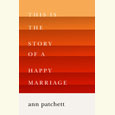One Cure to Heal Them All
In Dolen Perkins-Valdez’s historical novel, a Tennessee root doctor looks for a way to treat suffering after the Civil War
Afraid of being pigeonholed following the success of her 2010 New York Times-bestselling antebellum novel, Wench, Memphis native Dolen Perkins-Valdez had no desire to write another historical novel. Then she read This Republic of Suffering by Harvard president and historian Drew Gilpin-Faust. The book chronicles the Civil War’s legacy of death and destruction, and Perkins-Valdez decided her next novel should investigate the possibilities of healing the personal and national trauma caused by the war. Balm, which was released last month, looks not at the soldiers’ suffering but at the very real pain of widows, former slaves, and others.
 In advance of an interview with Perkins-Valdez which will be aired in an upcoming episode of Book Talk, a radio program sponsored by the Memphis Public Library, Chapter 16 is happy to publish a lightly edited excerpt from that conversation:
In advance of an interview with Perkins-Valdez which will be aired in an upcoming episode of Book Talk, a radio program sponsored by the Memphis Public Library, Chapter 16 is happy to publish a lightly edited excerpt from that conversation:
Chapter 16: There are three major characters in Balm. Let’s start with Madge, a free woman of color raised in a family of root doctors in Tennessee.
Dolen Perkins-Valdez: Madge was actually free before the Civil War, but after emancipation says she wants to figure out what it means to be “free free” rather than just free. And so she moves to Chicago and starts a life there.
Chapter 16: Our second character is Hemp Harrison, who was a slave in Kentucky and is now searching for his wife and her daughter. Even with the end of the war he wasn’t technically free because slavery didn’t end in Kentucky until December 1865.
Perkins-Valdez: That’s right because Kentucky never joined the Confederacy, and when Lincoln signed the Emancipation Proclamation, it was to free slaves in the rebellious states. In order to secure his freedom, Hemp goes to a “refugee camp” and enlists in the Union army. In exchange for enlistment, those men were granted their freedom papers.
Kentucky was a very interesting state for me to research for this book. I’m used to the Delta and cotton country, but in Kentucky the major crop was hemp. When Hemp the man is a slave, his master calls him “Horse.” So when he goes to Camp Nelson and enlists, he says his name is Horse, but they said, that’s just no name for a person, so what name do you want? He didn’t want to change his name too much because he was looking for his family, and he didn’t want them to not be able to find him. He tries to choose a name that will leave a clue for them. Hemp was the crop they tended, and Harrison was the name of his master, so he calls himself Hemp Harrison.
 Chapter 16: And our third character is Sadie, a young white widow from York, Pennsylvania, who begins communicating with the dead. How did she end up in Chicago?
Chapter 16: And our third character is Sadie, a young white widow from York, Pennsylvania, who begins communicating with the dead. How did she end up in Chicago?
Perkins-Valdez: Her father becomes afraid, since a lot of the young men are going off to war and dying, that there will not be any prospects for her in their town. A wealthy soldier stops by their house and suggests that if he gets to marry the daughter, he will pay off the father’s debts. The soldier who marries her is from Chicago, but he dies in a train crash before he gets there.
Chapter 16: There are a lot of themes that tie these three characters together, but the biggest one is that all the major characters are associated with healing: Sadie connects loved ones to their relatives who have passed, Madge heals people with her root knowledge, and Hemp drives the carriage for a local doctor.
Perkins-Valdez: Often I found that Civil War novels were racially segregated: you had black Civil War novels, and you had white Civil War novels. I was really interested in ways in which the narratives converged. What was one thing that we as a country had in common? I think it was that the war was a great sacrifice. It was a sacrifice on all sides. At the end of the war, we all struggled. Former slaves, freed men and women, struggled to find family members. They struggled to rebuild their lives. They struggled to figure out how they were going to support their families; they suffered tremendous hardship in that transitional moment.
The South was in shambles. People struggled to rebuild their towns, rebuild their families. The men had been killed. Women were left alone. And in the North—the same thing. I visited Gettysburg when I was doing my research for York, and I had a real palpable sense of the loss of life, that that battleground is still in some ways holy ground.
I just wanted to figure out what were they ways in which all of those different stories converged into one. I think that has to do with rebuilding. And I think rebuilding is really the American story—one of resilience and one of reinvention. We are, I think, the most resilient country on Earth; I think we are masters of reinvention. I think that the American spirit is one of sacrifice, struggle, and triumph, and those were the big themes I was playing with. The whole idea is: how does one rise from ashes? That’s really what Balm is about.
Chapter 16: If there is anything that is a balm in the book, I think it’s acceptance. If the characters can find acceptance in the world, then that would be a salve for so many of their wounds.
Perkins-Valdez: Yes, I think the book is about acceptance by the family. I tried to think about those individual families as a metaphor for our national family. So if you can find acceptance in your own small, little family, then that acceptance will be mirrored in the larger society of us accepting one another as Americans.
[This article originally appeared on June 12, 2015. The full interview can be heard here.]

Stephen Usery is the producer of Book Talk, an author-interview program that airs daily on WYPL FM 89.3 and is sponsored by the Memphis Public Library. Usery also produces Mysterypod, an independent podcast focused on mysteries, thrillers, and crime novels. He lives in Memphis.





